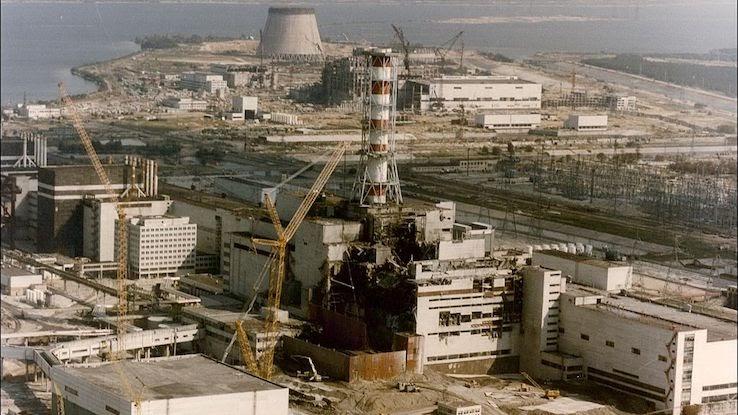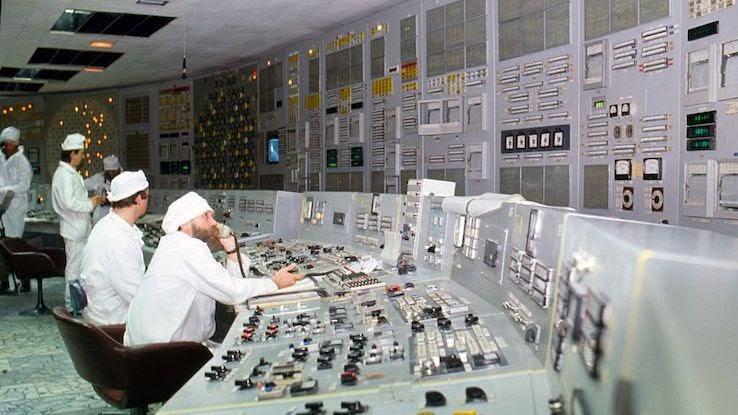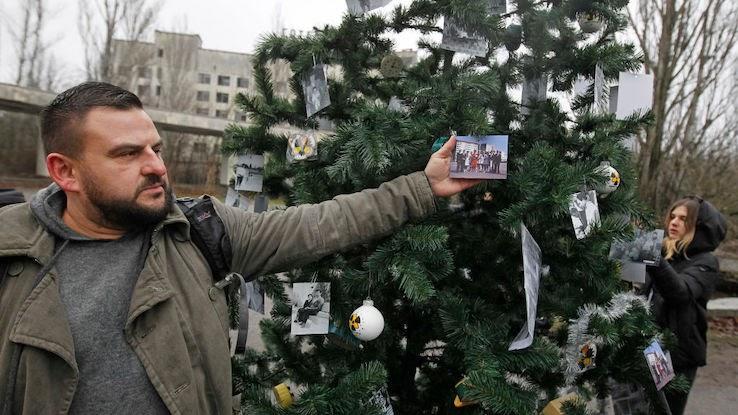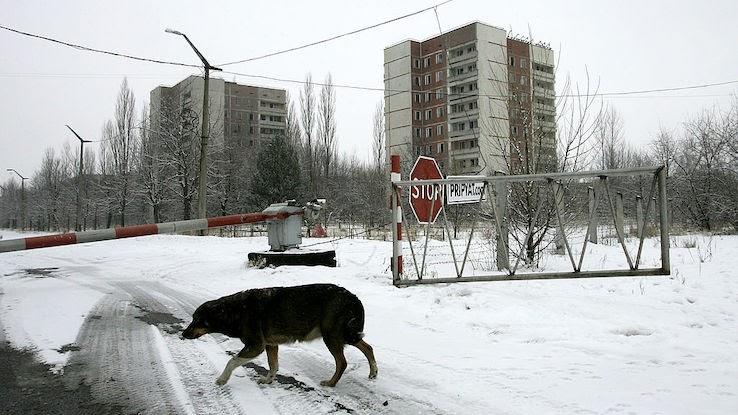The Nuclear Disaster at Chernobyl Is Not Just A Thing Of The Past

Thirty-six years ago, the world experienced the dangers of nuclear meltdown in an unprecedented way that shocked the international community and forced governments around the globe to reassess the safety of nuclear power. This event, the Chernobyl nuclear accident of 1986, would also end up changing everything we knew about disaster response — in addition to permanently altering the environment around the site of the reactor where the event occurred. Even today, communities continue to face repercussions related to the accident, which is still impacting the earth and the decisions of governments that have tried to clean up the fallout.
But the scientific community in general has also continued to deal with its own form of fallout from the event. Navigating the aftermath has permanently changed the way many countries plan to respond to nuclear hazards, and this process is still cited in arguments both for and against nuclear power. After more than three decades, recovery — when looking at multiple aspects of the accident — has been limited. But the incident has also influenced safety protocols the world over, and its continued impact on the scientific community holds important lessons about nuclear power.
In the last month, Chernobyl has re-entered headlines, and not just because of the 1986 accident. In the first days of Russia’s invasion of Ukraine, Russian forces took Chernobyl, leaving many surprised to learn that people still worked at the plant and wondering why Chernobyl was identified as a military target. Indeed a small number of re-settlers, many scientists who came to study the fallout, were given permission by the Ukrainian government to stay in Chernobyl and still call the town home today. And about 2,400 workers still look after the power plant— despite it being nonoperational.
When Russia invaded and captured Chernobyl, more than 100 workers were held there for 35 days. In that time Russian forces dug ditches and scattered mines, leaving many worried about the ecological effects of disturbing the area around the plant. A little over a month after capturing the plant, Russia retreated, reportedly in response to military losses and radiation exposure. They looted the plant, taking with them materials and captured Ukrainian National Guard Members. The entire operation left many wondering about the potentially devastating impacts that could arise if nuclear power plants continue to serve as military targets.
Editor’s Note: we will update this article as the situation continues to unfold. At this time, exposure to radiation in Russian troops has yet to be confirmed and the whereabouts of the captured Ukrainian troops is unknown.
What Caused the Chernobyl Nuclear Accident?
As the first nuclear power station built in Ukraine, the Chernobyl Nuclear Power Plant was intended to be a claim to fame for the Soviet Union, a shining example of its technological prowess and advancement. But the prestigious facility was built in a remote location, and Soviet officials had a difficult time attracting experienced workers to the town of Pripyat to live and work operating the power plant. Despite this, the relatively unskilled operators began running the plant, which provided power to a grid near Kiev, in 1977.

The reactors ran for nearly a decade without fanfare until April 25 of 1986, when operators dropped power in one of the reactors to run a safety test. Their objective? To determine whether the plant’s turbines could continue generating enough electricity before emergency generators had time to boot up during a massive power failure. After the test had begun, a shift change took place, and less-experienced night workers took over — having never received proper instructions about running the test.
In the midst of the shutdown, the reactor’s power dropped to precipitously low levels, which operators hadn’t anticipated. Unsure what to do, the workers removed the reactor’s control rods, violating the plant’s safety rules in the process, and finally stabilized the power output — after disabling the plant’s emergency shutdown system and other safety devices. As the test proceeded, an unexpected power surge took place. And, with the emergency shutdown system unable to function, the surge caused a massive explosion that engulfed the reactor in flames.
What started as a frighteningly powerful fire became a full-fledged nuclear disaster. The plant’s uranium fuel burned, emitting massive amounts of radiation into the atmosphere around the facility as first responders frantically scrambled to cool down the reactor. At one point, the fire rose a full kilometer into the air, and it took days to finally put out the flames in the core of the reactor. The plumes of smoke that rose from the plant carried untold amounts of radioactive material and other debris across Europe. To date, over 100,000 square miles in modern-day Russia, Ukraine and Belarus are uninhabitable because of the extreme levels of radioactive material that contaminated the environment.
Chernobyl’s Impact on People
For a variety of reasons, there is debate over the impact that the Chernobyl disaster has had on humans. Dozens of people, including plant workers, civilians and firefighters, died in the immediate hours and weeks as a direct result of the disaster, whether due to radiation exposure and poisoning or the explosion itself. Some died due to burns from the raging fire, and others died because they approached the reactor without wearing any sort of protection while assisting with emergency response efforts.

But the effects of the Chernobyl accident have proven to be enduring. Radioactive material often resembles dust; it isn’t visible to the naked eye, but it is insidious. When the explosion occurred, it spread tiny radioactive particles into the atmosphere, and they came to rest on nearly everything in Pripyat — including on people and animals. These particles, called radionuclides, continue emitting radiation and take years to decay to the point that they don’t cause harm; by some estimates, the exploded reactor will remain dangerously radioactive for 20,000 years.
Children who were living in areas near Chernobyl when the accident occurred continue to experience the brunt of its effects. Those children are middle-aged today, and many of the residents who were adults when the disaster took place are also still alive. The total impact of the disaster on humans isn’t something that can fully be measured, as people continue to grapple with potential effects of the aftermath. Scientists estimate that by 2065, the Chernobyl disaster may have been the cause of 41,000 cases of cancer, especially of the thyroid gland, which is highly sensitive to radiation exposure.
The environment surrounding Chernobyl became so contaminated by radiation that 220,000 people had to leave their homes permanently. In recent years, a few have moved back, against the advice of governments and scientists, and there are tours of some part of the Chernobyl Exclusion Zone — an officially designated area with restricted access to prevent people from exposing themselves to the radioactive materials that are still present.
Chernobyl’s Impact on the Environment
Although the fire has been out for decades, Chernobyl remains a dangerous environmental hazard. Nuclear waste does not simply disappear, and the waste inside the reactor has had to be contained in buildings repeatedly to avoid further contamination of the surrounding environment. There have been multiple attempts to contain the nuclear waste that still lies in the broken reactor at the plant. The earliest-built structures meant to prevent radiation from escaping have had to be replaced, and the containment efforts alone have surpassed a cost of $760 million. The latest containment structure was completed in 2019, and it could also become insufficient one day.

The environmental impact spreads much further than the exclusion zone, however. Radionuclides from Chernobyl’s radioactive cesium can still be found in meat, milk and plants in certain parts of Europe. The number of these atoms, which can spontaneously emit radioactive energy, is decreasing each year, but their presence proves that the Chernobyl accident severely contaminated soils across a wide area. The radiation in the environment has stunted the growth of trees, and it causes some fruit-bearing trees to produce less.
While Chernobyl effectively drove out some species of animals, there are others, such as grey wolves, that defy the odds by seeming to thrive in the exclusion zone. Creatures living in the area that have been tested have increased levels of radioactivity in their bodies, but, unlike humans exposed to such an environment, they have been able to survive. Due to the danger of radiation, however, scientists are not able to study these animals closely enough to determine if the intense radiation exposure has changed their behavior or reproductive capabilities.
The anniversary of the Chernobyl nuclear disaster poignantly falls just four days after Earth Day. This is the annual anniversary of the start of modern environmentalism and is a time when people all over the world work to clean up and protect the environment. Although the event damaged the area surrounding the plant in irreparable ways, the Chernobyl disaster highlighted the importance of safeguarding people and the environment, ultimately leading to changes in the safety systems used in nuclear power plants around the world.
Chernobyl’s Impact on the Nuclear Industry
Two factors that contributed to the extent of the Chernobyl nuclear disaster have led to permanent changes in the nuclear industry. In retrospect, experts note that the isolated nature of the former Soviet Union contributed to the disaster and the world’s response to it. Some of the safety standards in the factory did not meet basic standards in other countries at that time. Neighboring nations were not able to respond as adequately as possible because there was a level of secrecy around the true extent of the disaster as well.

Graphite initially was used in the reactor to prevent overheating, and with all parts in working order, graphite did its job. In the lead-up to the disaster, however, Chernobyl’s graphite was exposed to the radioactive portions of the reactor, and this essentially sped up the process of nuclear fission, contributing to the explosion.
Today, graphite is no longer considered an acceptable material to use for the cooling of nuclear reactors. Instead, water is used as a coolant because it’s easier to control and it slows the process of nuclear fission when exposed to radioactive materials. In addition, there are now governing bodies, such as the International Atomic Energy Agency and the Nuclear Regulatory Commission, that set safety standards for the nuclear industry at both national and international levels. While it’s important that these groups do the necessary work of keeping communities and the environment as safe as possible, it’s also important we never forget that nuclear power is just that — power. And its power for destruction is as great as the promise of sustainable energy it also carries.





